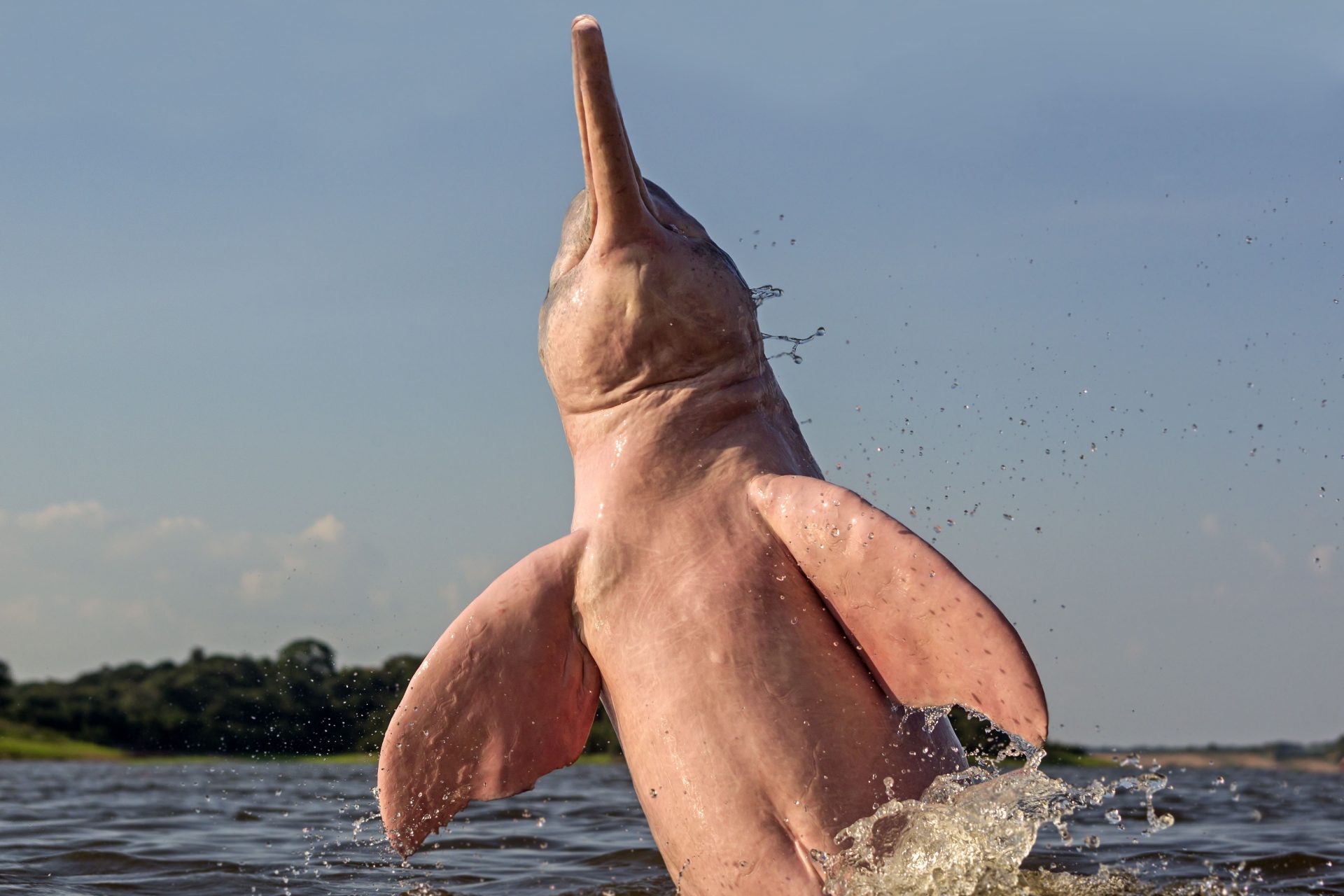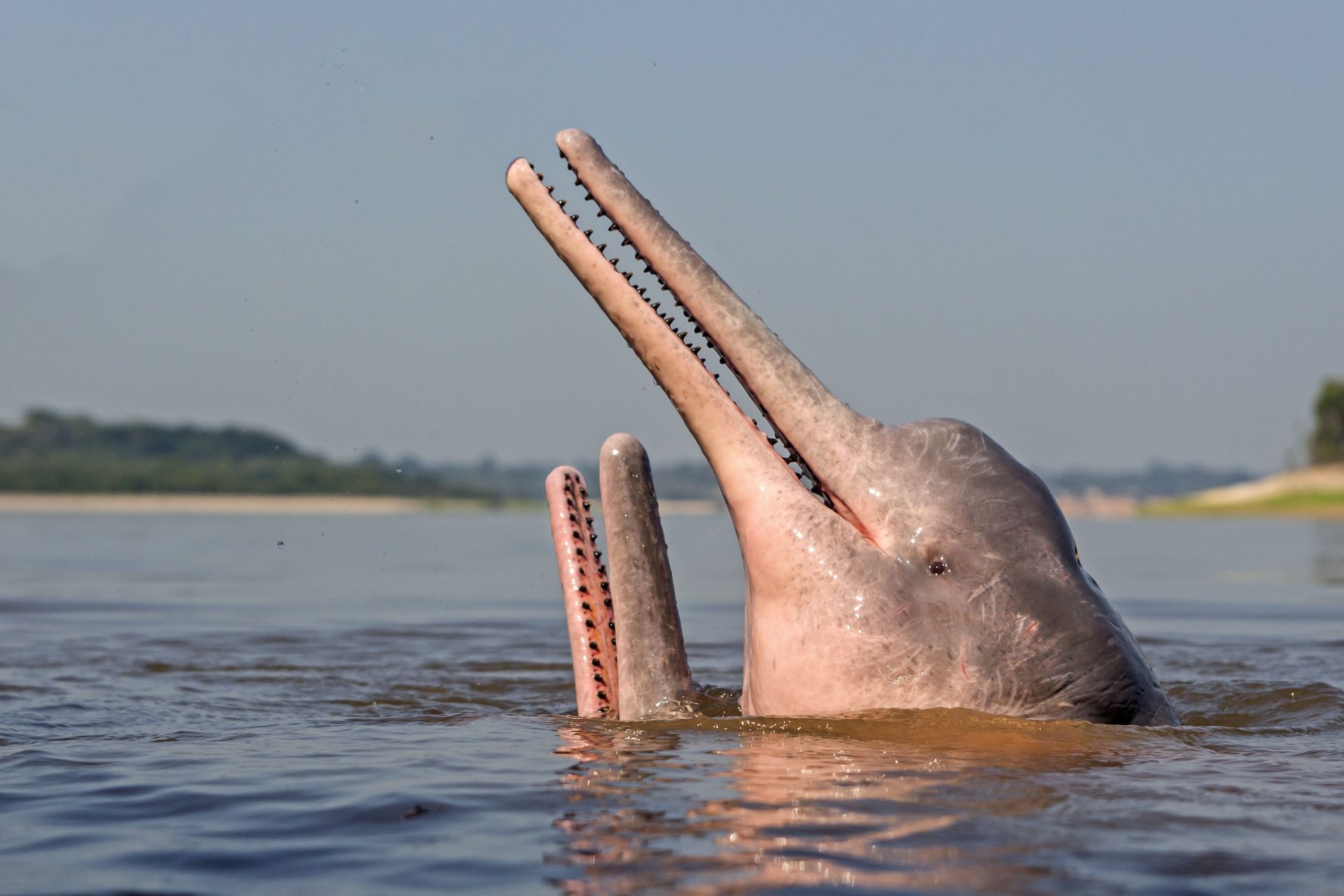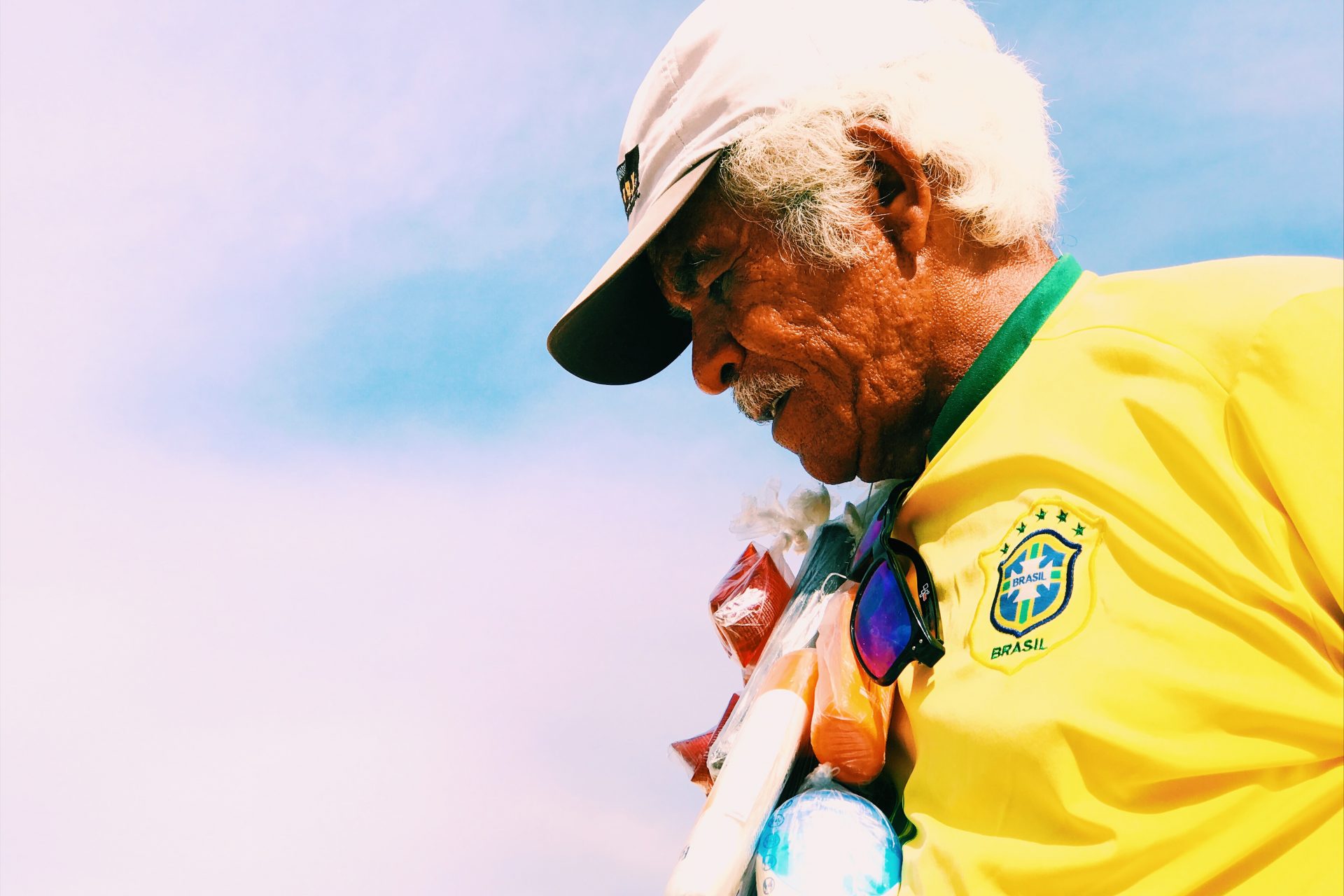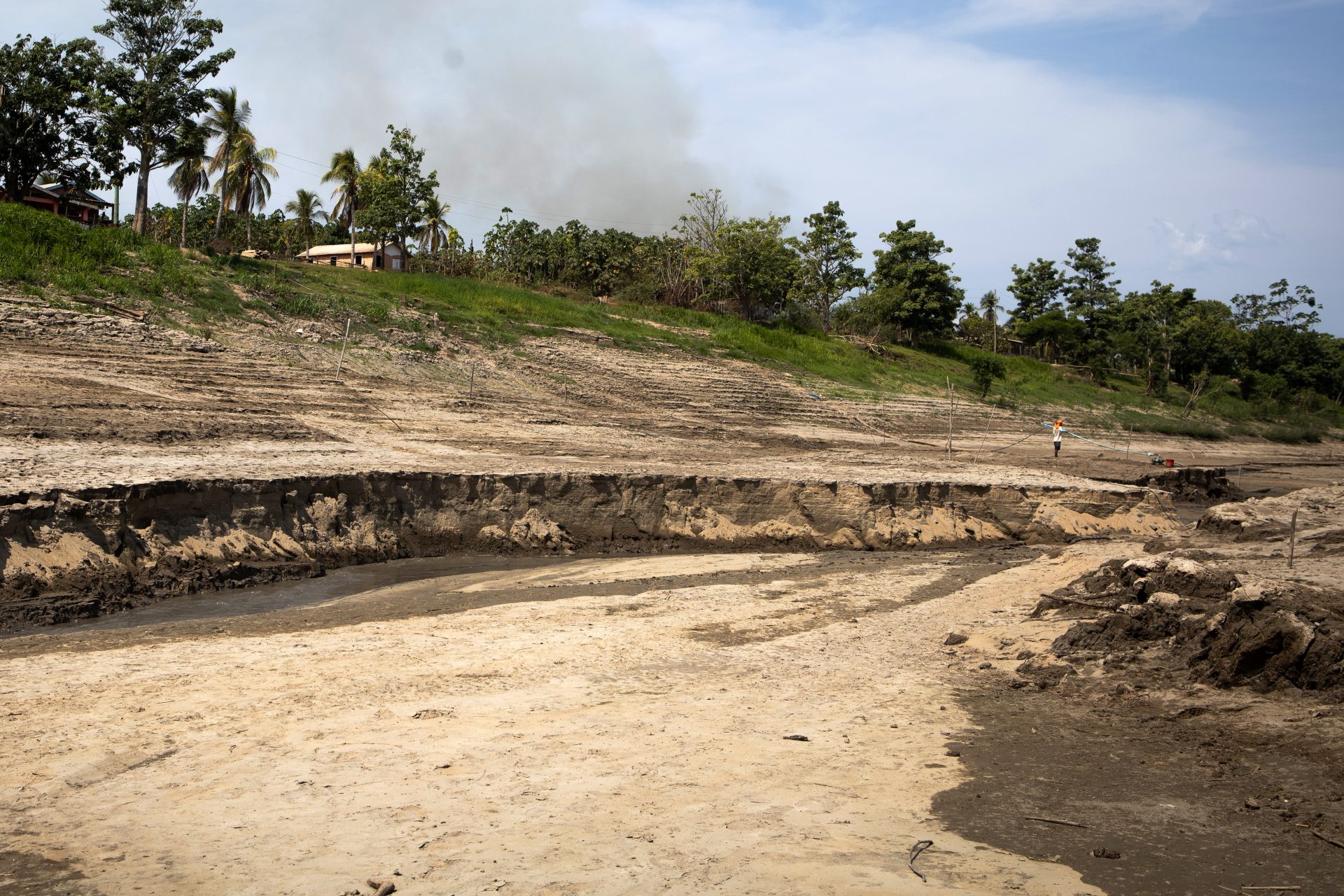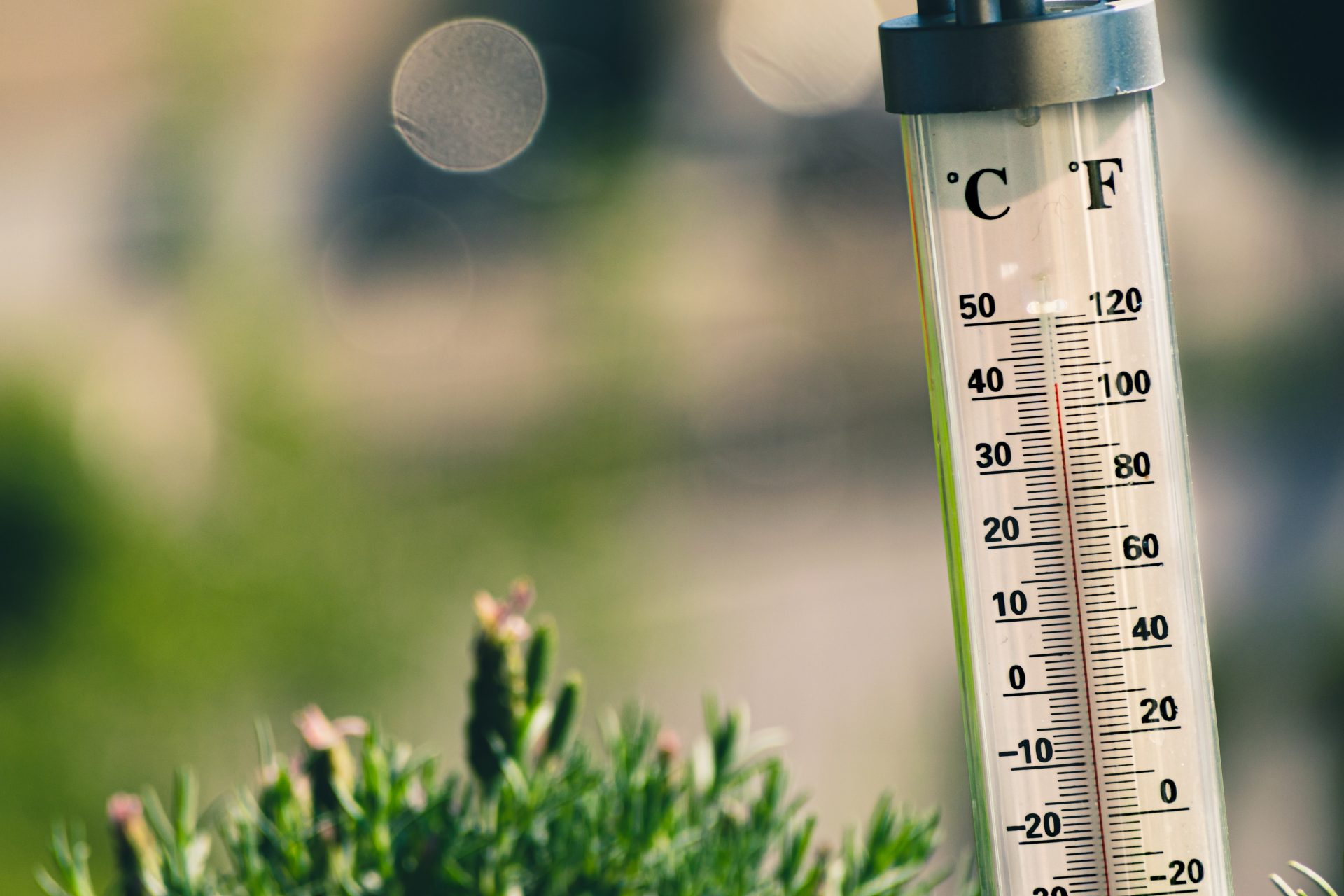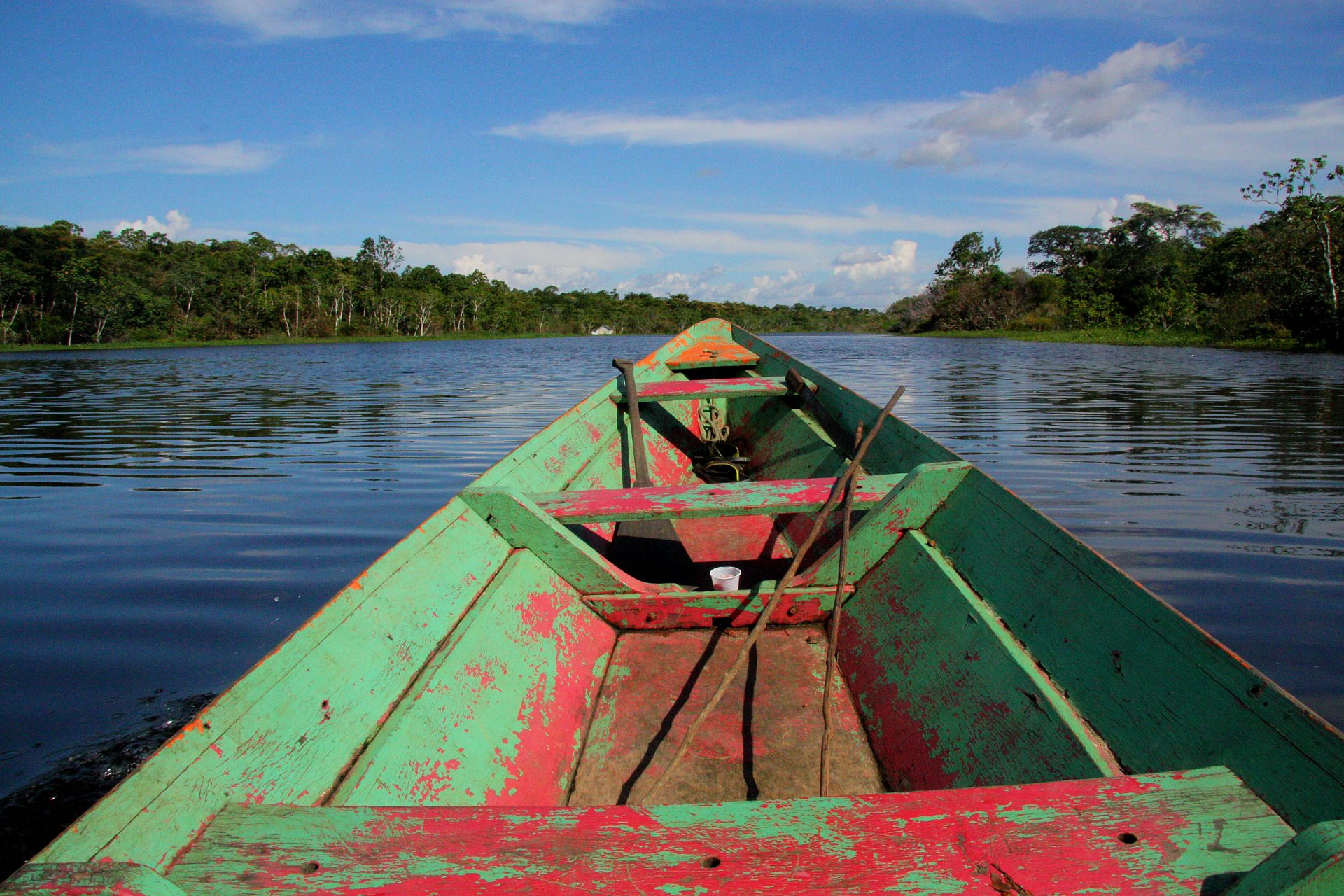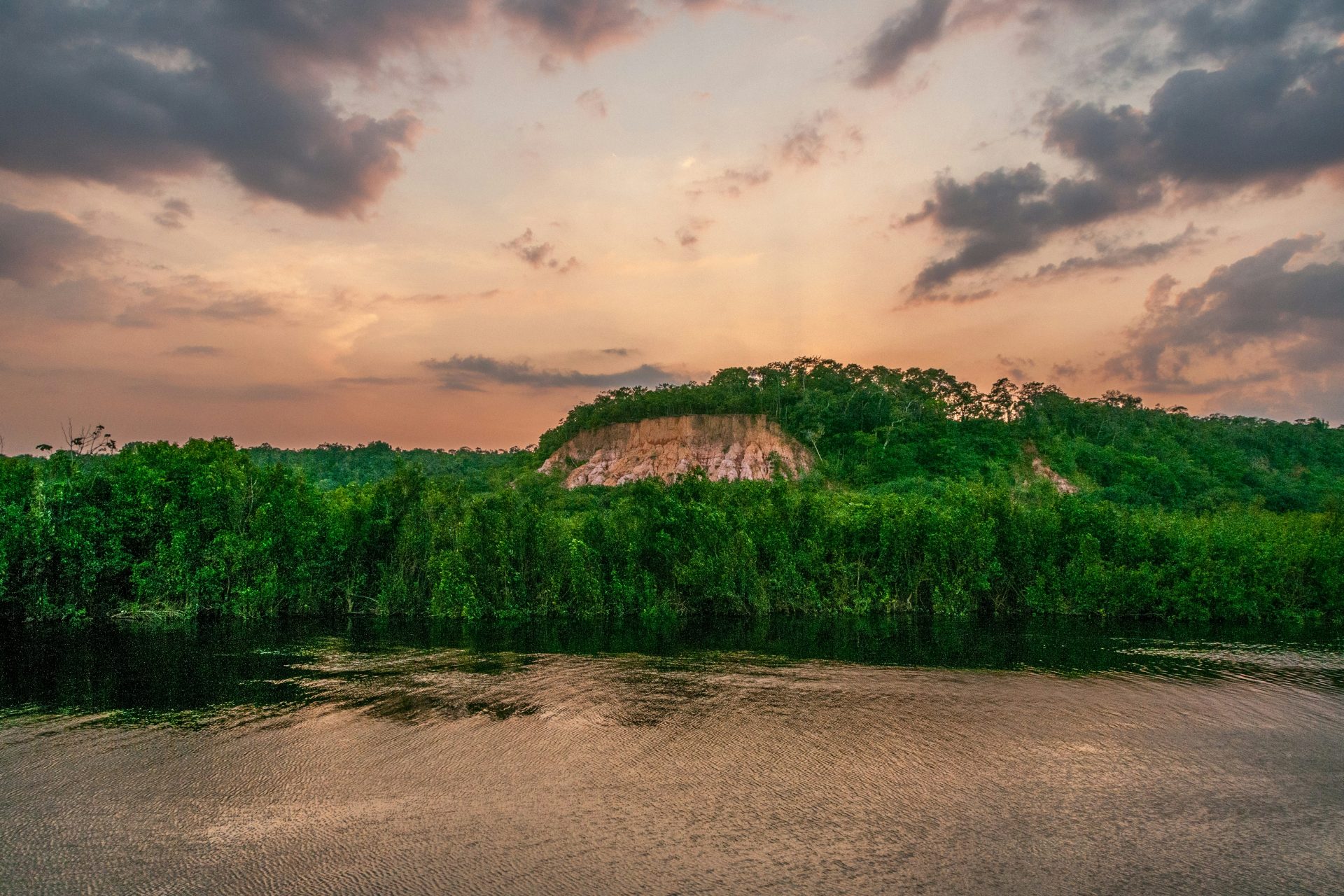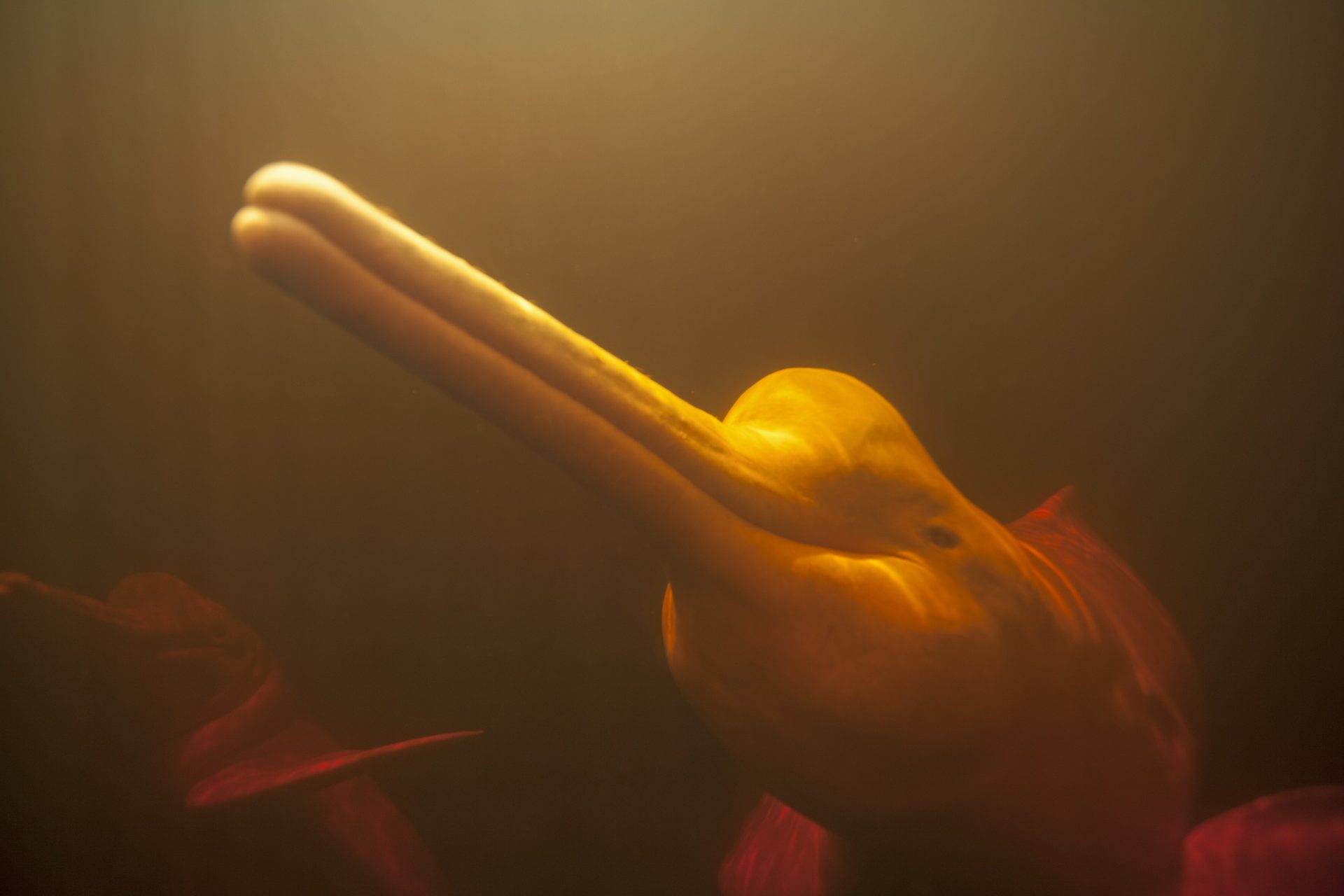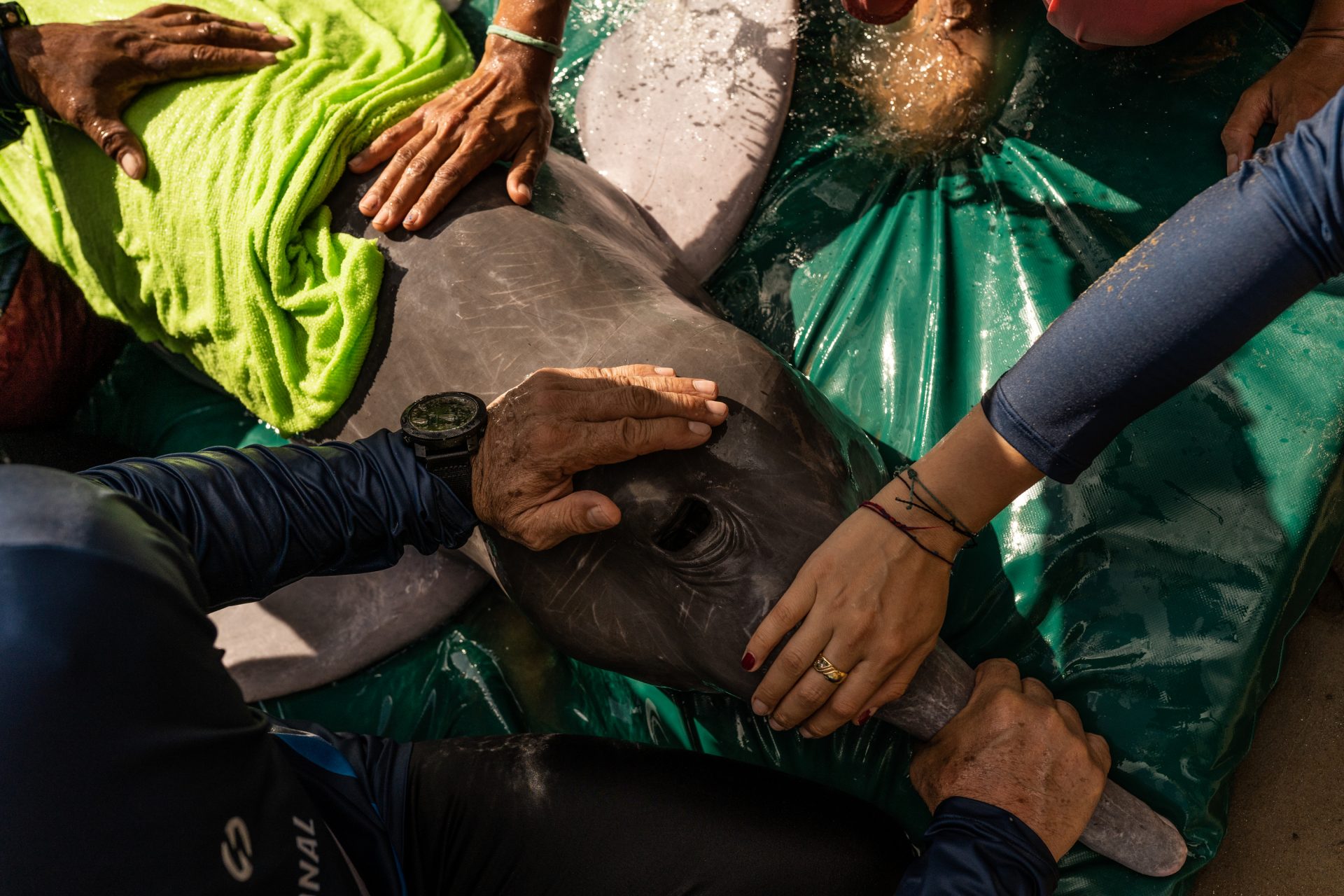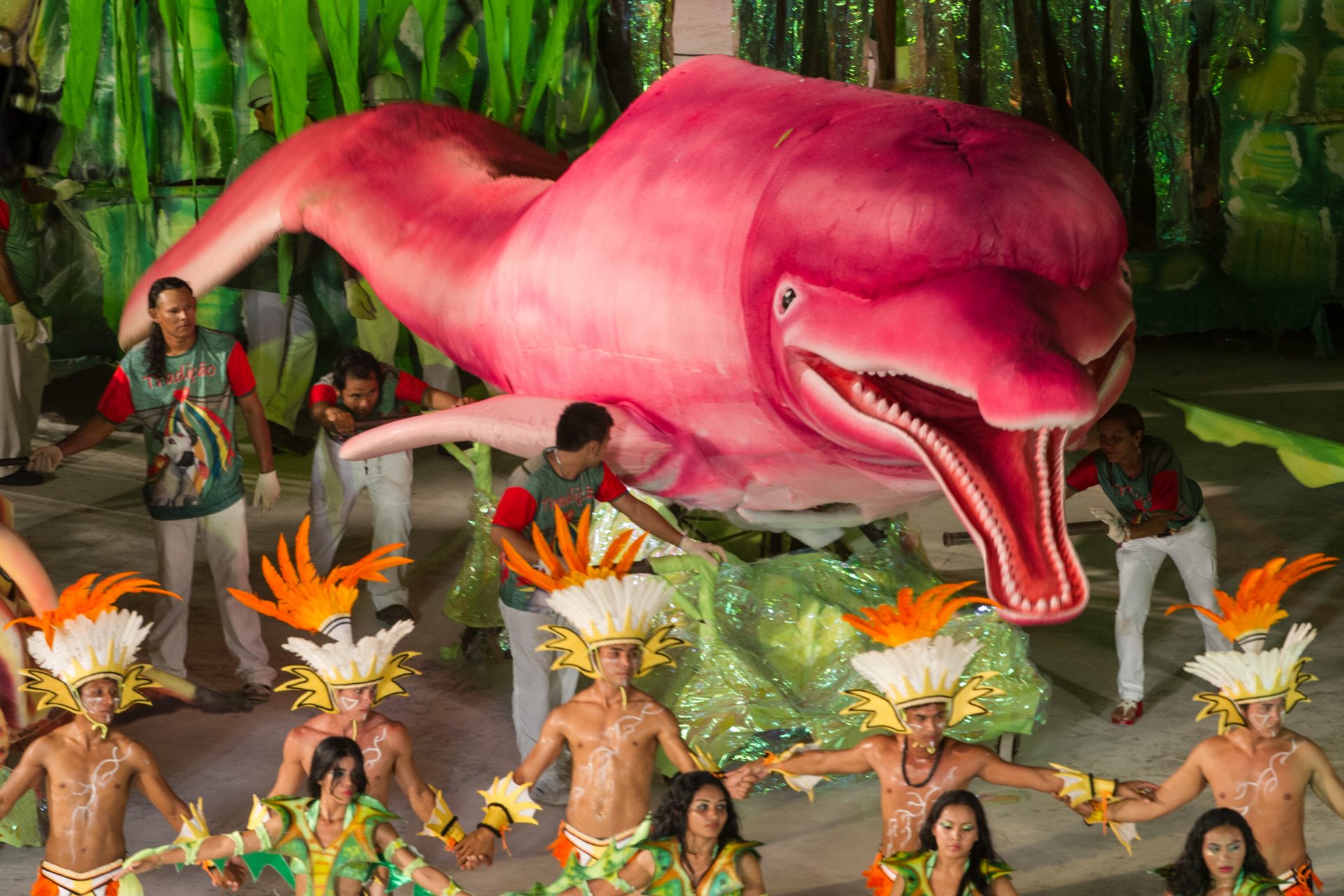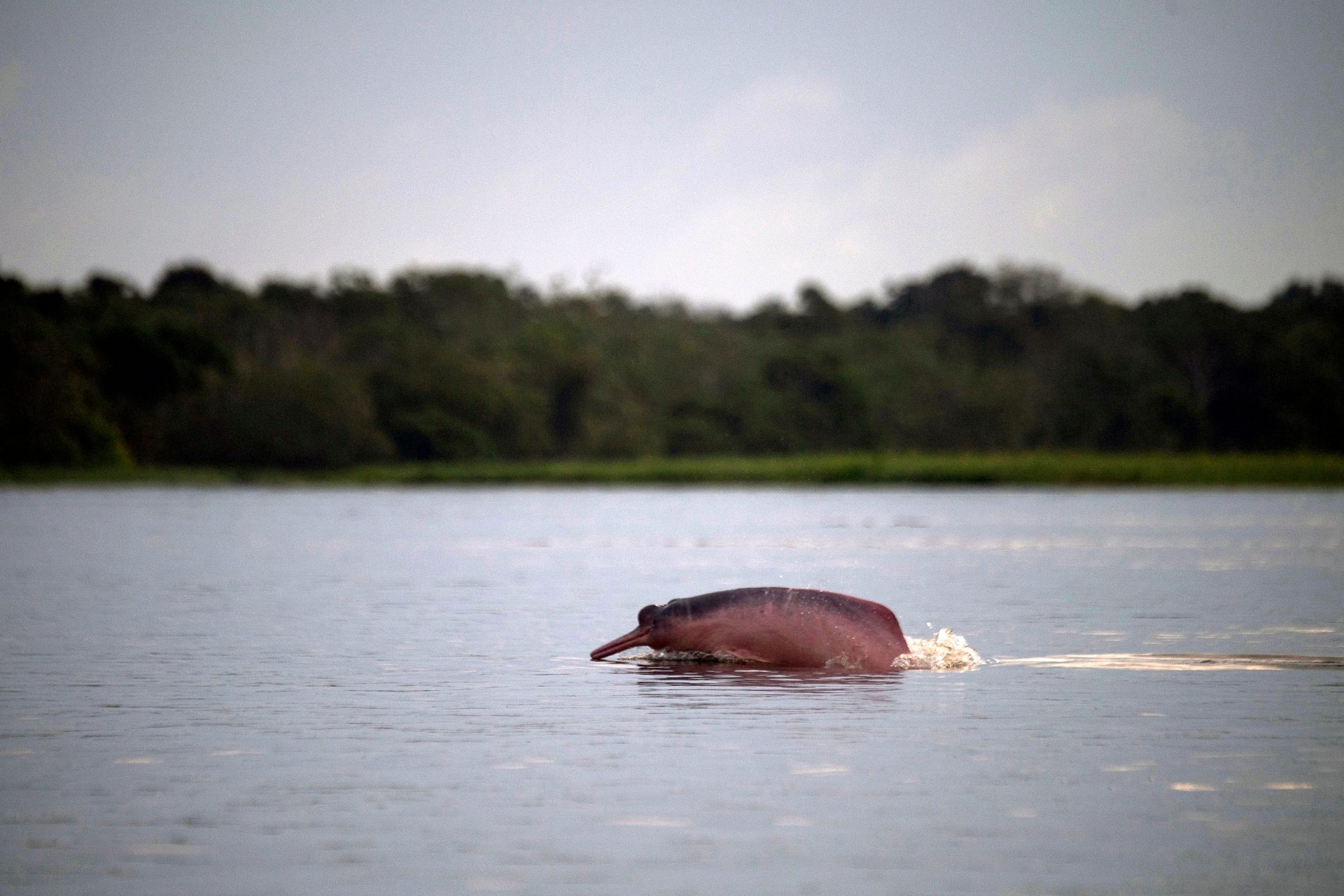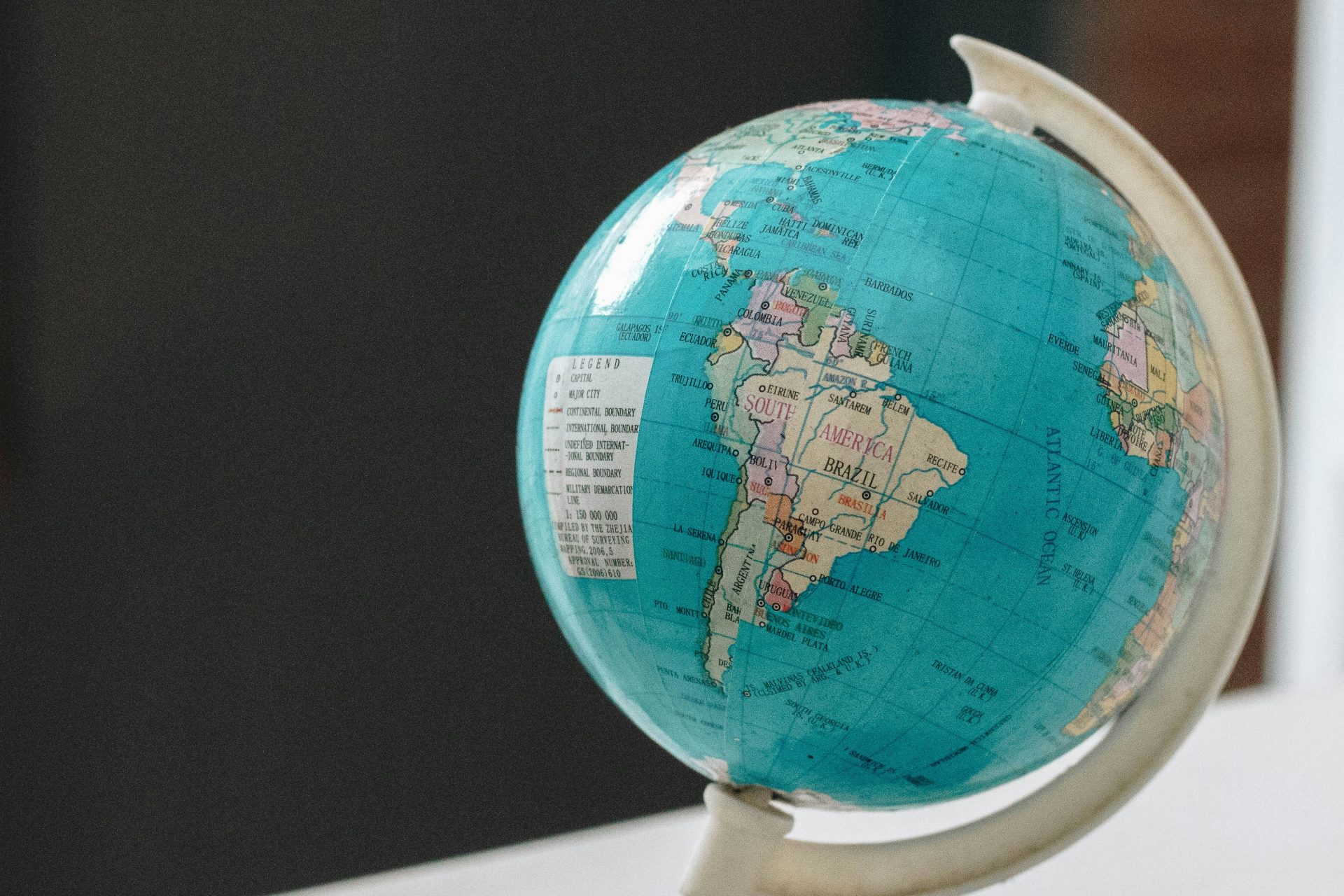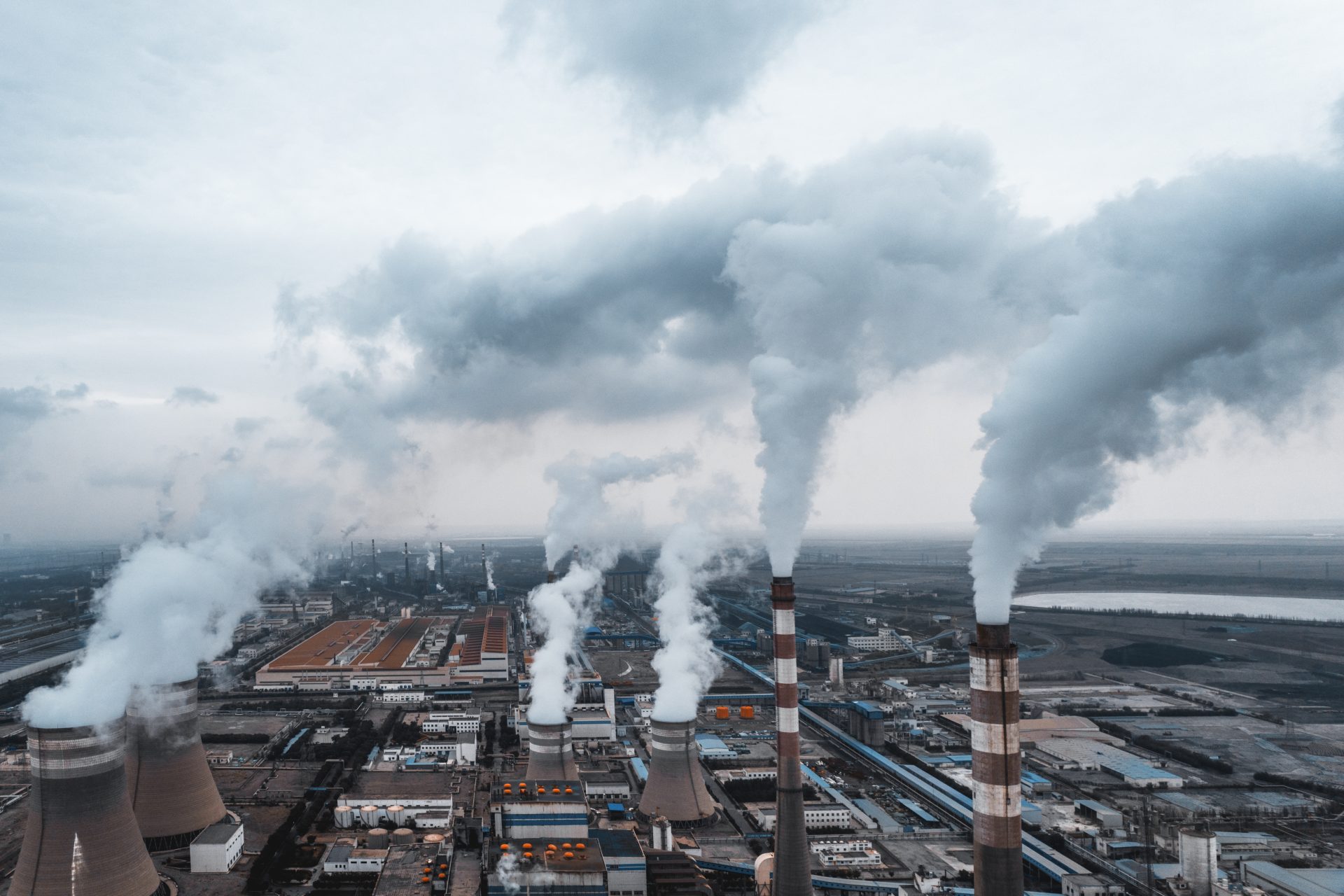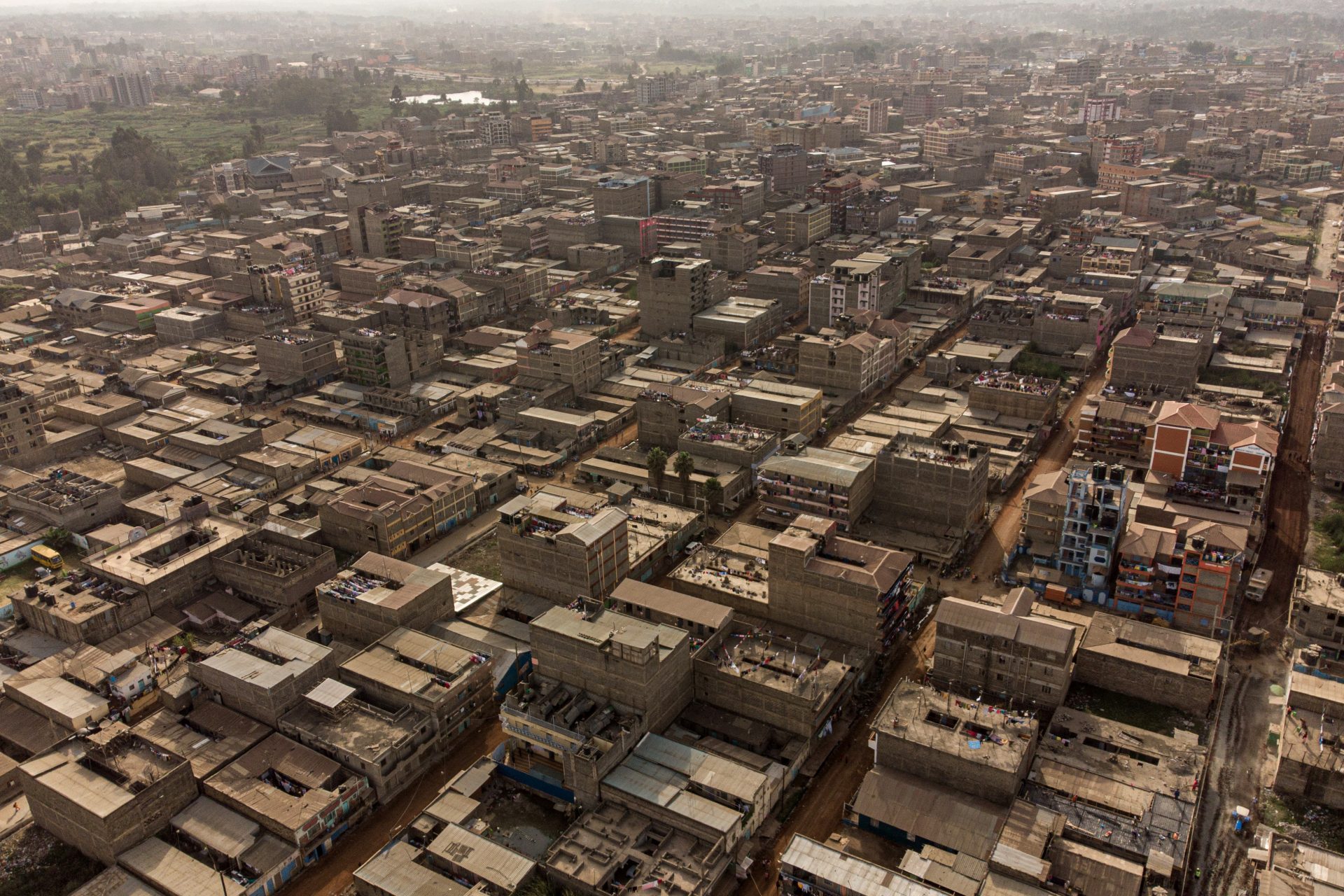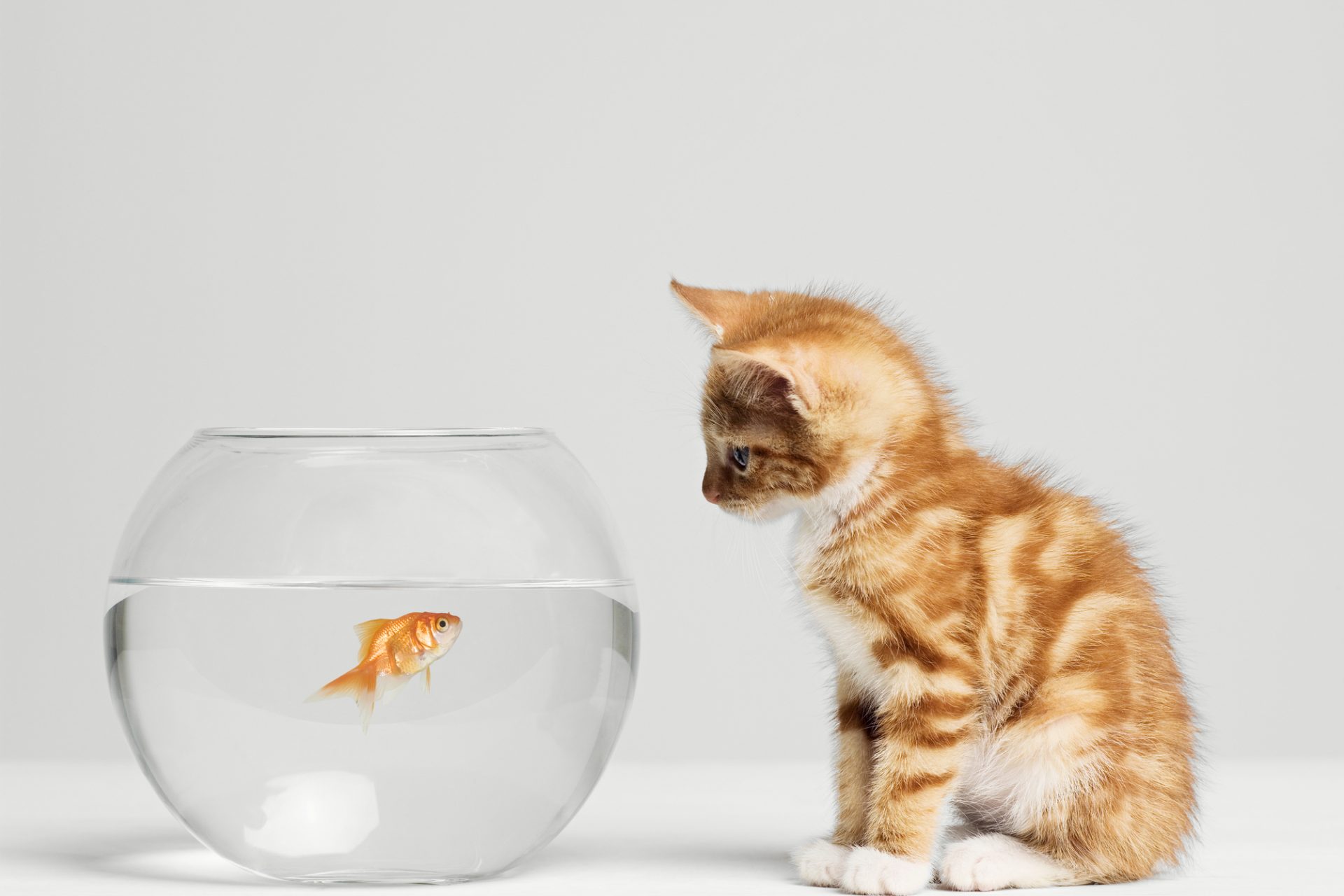The race against time to protect the Amazon River pink dolphins
Botos are river dolphins that live in South America's Amazon River. Known for their characteristic pink color, time is running out for these beautiful and unique creatures.
Back in October 2023, dozens of Amazon River dolphins were reported to wash ashore dead, raising the alarm among local authorities and environmentalists around the globe.
According to The New York Times, neither scientists nor locals have seen anything like this phenomenon.
Image: @viniciusamano / Unsplash
The Amazon river has been affected by a severe drought, drying out tributaries, rendering water routes impossible to pass, and turning shallow areas into hot baths.
Al Jazeera reported that the Lake Tefé region, where over 120 dolphin carcasses have been found, was hit by high water temperatures of 102 degrees Fahrenheit (39 Celsius).
Image: @sumekler / Unsplash
Extreme temperatures due to climate change have been pointed out as the main culprit in the disruption of the Amazonian ecosystem and the massive deaths of river dolphins.
The New York Times interviewed a representative from the Mamirauá Institute for Sustainable Development, who stated that the water was at least 9 degrees Celsius hotter than usual.
Image: @splashabout / Unsplash
On top of that, thousands of fish also died due to the drought and the extreme heat. Scientists have described the water in the Lake Tefé region as “a soup”.
The Amazon River dolphin, famously known for its pink color, is only found in the rivers of South America and is one of the few freshwater dolphins left in the world.
Image: campoilucas / Unsplash
The dolphins have been behaving erratically due to the heat, becoming disoriented and swimming in circles, unable to dive as they usually do.
According to CNN, local scientists and activists are trying to save the dolphins by transferring them to lagoons and ponds with cooler water.
However, the operation is not easy given the remoteness of the area and the necessity to verify if toxins or viruses are present before releasing the animal into the wild.
The drought has had a disruption on communities along the Amazon River as well.
Image: @splashabout / Unsplash
Below-normal water levels have been reported in at least 59 municipalities in the Brazilian state of Amazonas, affecting fishing and river-based transportation.
The humidity and the poor air quality have also brought up a stench among these communities, a few which depend on dolphin-centered ecotourism to survive. Indeed, this animal is a symbol for the region.
The reproductive cycle of the Amazon river dolphin tends to be slow, making this species vulnerable. Currently, it is considered an endangered animal.
According to NPR, the number of dead river dolphins represents between 5 to 10% of the estimated population.
According to Mongabay, by January 2024 nine countries had signed the Global Declaration for River Dolphins, seeking to address the current situation. Sadly, time will tell if this is too little, too late.
Image: kronemberger / Unsplash
More for you
Top Stories



